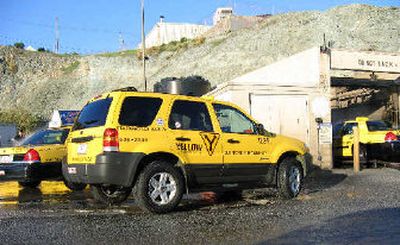New York cabs could go hybrid

NEW YORK – The quality of the air in New York City could come down to 10 inches of legroom.
That is approximately the difference in backseat space between a standard New York taxi and the new hybrid SUVs that environmentalists would like to see added to the city’s fleet of 12,760 yellow cabs.
Whether New Yorkers are willing to give up the extra room is about to be tested.
Running on a combination of gasoline and electricity, the hybrids get double the gas mileage of traditional taxis and pollute far less. But for months, the city Taxi and Limousine Commission has been reluctant to allow them to be used as cabs.
The problem, explained commission chairman Matthew W. Daus, is that people like their cabs big, and hybrids do not have the legroom and large trunks of the fleet’s current workhorse, an extra-long version of the Ford Crown Victoria.
“It would be unbelievably wonderful to have hybrid vehicles in our taxi fleet. I think it would have a profound effect on the environment,” Daus said. “The one challenge that we have is that they are too small.”
The City Council passed a bill Thursday that would allow taxi owners for the first time to put hybrids into service, starting in late summer. It will now be up to the taxi commission to decide which brands will be allowed.
Daus said the commission is close to selecting one or two models on a trial basis. From there, the success of the experiment could depend, at least in part, on whether New Yorkers will put up with less legroom.
Exactly how many hybrid cabs will ultimately hit the streets will be up to the cab owners and companies.
Mark A. Izeman, a lawyer with the Natural Resources Defense Council, said he is certain hybrids will be embraced by cabbies and customers.
“They’ll take less legroom if they can breathe easier in the back seat,” Izeman said. “If you converted the entire fleet of New York City taxicabs to hybrids, it would be the equivalent of taking 24,000 cars off the road, from a global warming perspective.”
A trial of hybrid cabs in New York is likely to be watched closely by cab companies in other big cities, which have been similarly slow to embrace alternative-fuel taxis. Despite their potential to lower fuel costs, only a token number of vehicles running on clean fuels have been put into service as cabs nationwide.
Space has been a big concern, and so have reliability and power, said Alfred Lagasse, executive vice president of the Taxi, Limousine and Paratransit Association, a national trade organization for cab companies.
“We aren’t used to that type of vehicle. We want to see what happens,” Lagasse said. “Does it hold up to the wear and tear of taxi service? Do the customers accept it as a taxi?”
The industry asked a similar question about cabs running on compressed natural gas in the late 1990s and got a mixed answer.
In New York, the city’s taxi commission persuaded a peak of around 180 cabbies to switch to natural gas cars but largely abandoned the campaign in 2000 after drivers complained there were not enough fueling stations.
Drivers in other parts of the country voiced similar concerns, and Ford recently announced it would stop making a compressed natural gas version of the Crown Victoria.
Hybrids may hold more promise.
In San Francisco, a pair of companies added 15 hybrid Ford Escapes to the city’s fleet of 1,400 taxis in February. The small SUVs have an in-town fuel efficiency rating of 36 miles to the gallon, compared with 18 for the Crown Victoria – an important advantage at a time of rising gas prices.
Yellow Cab Cooperative of San Francisco owns 10 of the hybrids. The company’s general manager, Hal Mellegard, said customers seem to like them, but he is waiting to see how the vehicles hold up on the city’s famous hills.
“I expect a car to be running well after just 50,000 miles,” he said. “When we get to 90,000 miles, we’ll talk.”